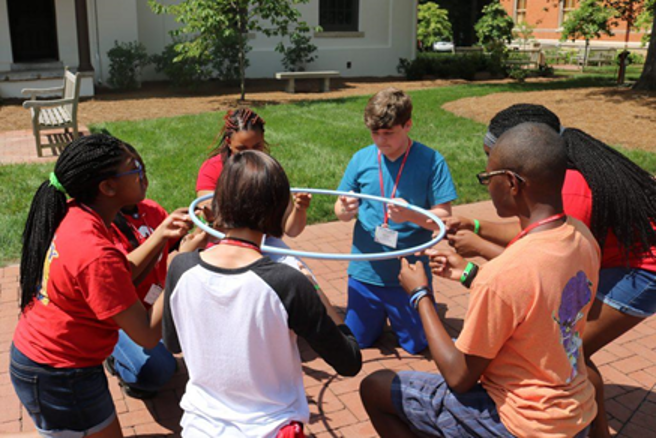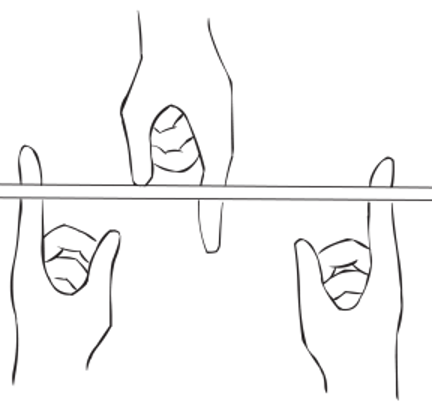Age Group: All
# of Students: Min- 4, Max- the more the merrier!
Overview
Students will practice working together in teams to collect as many balls as possible.
Materials
Open space; small lightweight balls, as many as possible (think dodgeballs, tennis balls, balls from a ball pit, etc)
Option #1- If you have mini rolling scooters, use those and the same number of baskets or open containers to grab balls
Option #2- If you do NOT have mini rolling scooters, use hula hoops. You will need to attach a long string to the hula hoops
Duration
10-15 minutes
Instructions Option #1:
1. Gather students in an open space and split into 3-4 teams. Each team has a rolling scooter and a basket/container.
2. Gather all balls in the center of the room.
3. Explain the game.
Instructor: “We are going to work together in teams to gather as many balls as possible. Two members from each team will work together at one time.”
“Person #1 will lie on top of the scooter, belly down. Person #2 will grab person #1’s feet and control them on the scooter going forward or backward. Person #1 will have a basket or container in their hands. Each team will start at opposite ends of the room at their designated starting line. When I say ‘go’ each pair from each team will roll to the center of the room -- person #2 controlling person #1’s feet and moves them forward and backward -- and person #1 will scoop up as many balls as possible into their basket.”
“After one swipe with the basket, person #2 will roll them back to their starting line, place balls there, and roll back to the center to collect more balls. The round continues until all balls have been collected. Whichever team has the most balls at the end of each round gets a point. Continue until all players have had a chance to play. The team with the most points at the end wins.”
4. Ask for two students to demonstrate how to use the scooter.
5. Check for questions, then begin the game!
6. Explain the game. Instructor: “We are going to work together in teams to gather as many balls as possible.

Instructions Option #2:
Steps 1-3 are the same as Option #1.
Instructor: “Only one person from each team will go at a time. Each team will start at opposite ends of the room at their designated starting line. When I say ‘go’ one person from each team will run to the center of the room with their hula hoop and string. The person must throw their hula hoop into the pile of balls, scoop up as many as possible and drag them back to their starting line, holding onto the string, then run back to the center to collect more balls. The round continues until all balls have been collected.”
Whichever team has the most balls at the end of each round gets a point. We’ll keep going until all players have had a chance to play. The team with the most points at the end wins.”
4. Show a quick example of the game.
5. Questions?
6. Begin game
7. After each round, switch out players.

Reflection Questions:
1. How well did your team work together?
2. Can you demonstrate positive teamwork?
3. Why is it important to motivate one another when working on a team, rather than being negative?
4. Can positive feedback during a team activity make your team do better?










